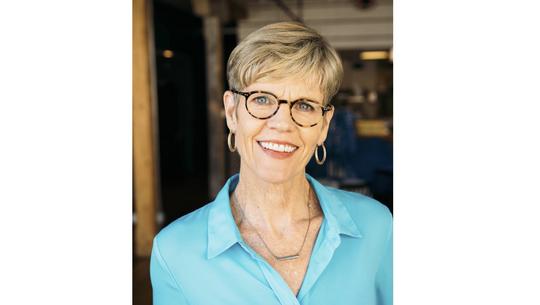
The largest public-private economic development partnership in Minnesota history marks a significant milestone on Jan. 4, when Patrick Seeb officially steps into the role of executive director of the Destination Medical Center Economic Development Agency, following the retirement of Lisa Clarke.
Clarke led the $5.6 billion effort, known as DMC, for its formative first five years. Her charge was ambitious: leverage the strength of Mayo Clinic to harness private development and public infrastructure funding in a coordinated effort that would transform the city of Rochester and bolster the surrounding Olmsted County and the state.
The state of Minnesota has committed $585 million to DMC over 20 years. That is being matched by $3.5 billion from Mayo Clinic and $2.1 billion in planned investments from other private development sources. As Phase 1 draws to a close, DMC reports creating more than 7,000 new jobs and attracting nearly $10 of private investment for every $1 of public funds.
"I'm so excited to see the community come together, to see more people living downtown, more energy and the potential of new restaurants and retail," Clarke said. "I think this community is ready to blossom, and I am excited to see where DMC goes next."

Seeb is a veteran of economic development. Before taking the DMC helm, he served as the organization's senior director, economic development and placemaking. He joined DMC after spending 20 years as executive director of Saint Paul Riverfront Corporation.
"What attracted me is … the whole idea that there was going to be a resourced and researched approach to growing the community," Seeb said.
Community connections
One common misperception about DMC is that people think of it as a single project. In fact, it is the sum of hundreds of projects that will take place over a long period. That, Seeb said, requires careful planning and patience.
"It's really the jigsaw puzzle that we're putting together," he said. "Each piece has to fit together, and it has to ultimately make for a whole picture."
The initiative spans eight core areas: arts, culture and entertainment; livable city; hospitality and convention; research and technology; sports, recreation and nature; learning environment; health and wellness; and transportation. There are multiple projects within each area, all of which are guided by a 700-page, 20-year development plan.
Seeb's jigsaw analogy is evident in the detailed way in which each project connects to another. For example, the DMC plans to create an extensive network of bike lanes to make Rochester more friendly to cyclists. Rather than build out the network all at once, the approach includes piggybacking bike lane construction to scheduled repairs to sewer lines, allowing both projects to be completed more economically and with less combined road disruption.
The Rochester experience
Throughout the DMC projects, the common thread is improving the experience people have in Rochester, whether they are residents or visitors. Mayo Clinic is a significant draw to the region, with patients and their families traveling to Rochester from all over the world to receive care. When they arrive, they typically spend 70% of their time outside the clinic, accessing the region's hospitality, recreation, entertainment and transportation offerings.
"When the DMC initiative launched, the team interviewed visitors and patients to Mayo Clinic," Seeb said, "and only 45% of them said they had a high degree of satisfaction with Rochester, which is pretty bad. But worse yet, when they asked residents the same question, only 29% had a high satisfaction with the city."
One of the current DMC priorities, dubbed Heart of the City, is among those that will benefit both residents and visitors. It is designed to improve the center of downtown Rochester by creating new public spaces that link Mayo Clinic with surrounding commercial, retail and residential properties. So far, the effort has included renovating the historic performing arts center Chateau Theatre, the Kahler Hotel and the Wells Fargo building. Renovations to Peace Plaza, a public park that is home to many downtown events, and First Avenue are underway.
Other current priorities include the development of Discovery Square, a hub for businesses in the biomedical research, education and technology fields, and a number of transportation projects designed to improve the way people move through the city.
As she prepares for retirement, Clarke, a long-time advocate for the Rochester community, said she is optimistic about Rochester's future. "When I see people talk about downtown and connect with one another downtown, that is a powerful inspiration."
Learn more about Destination Medical Center.